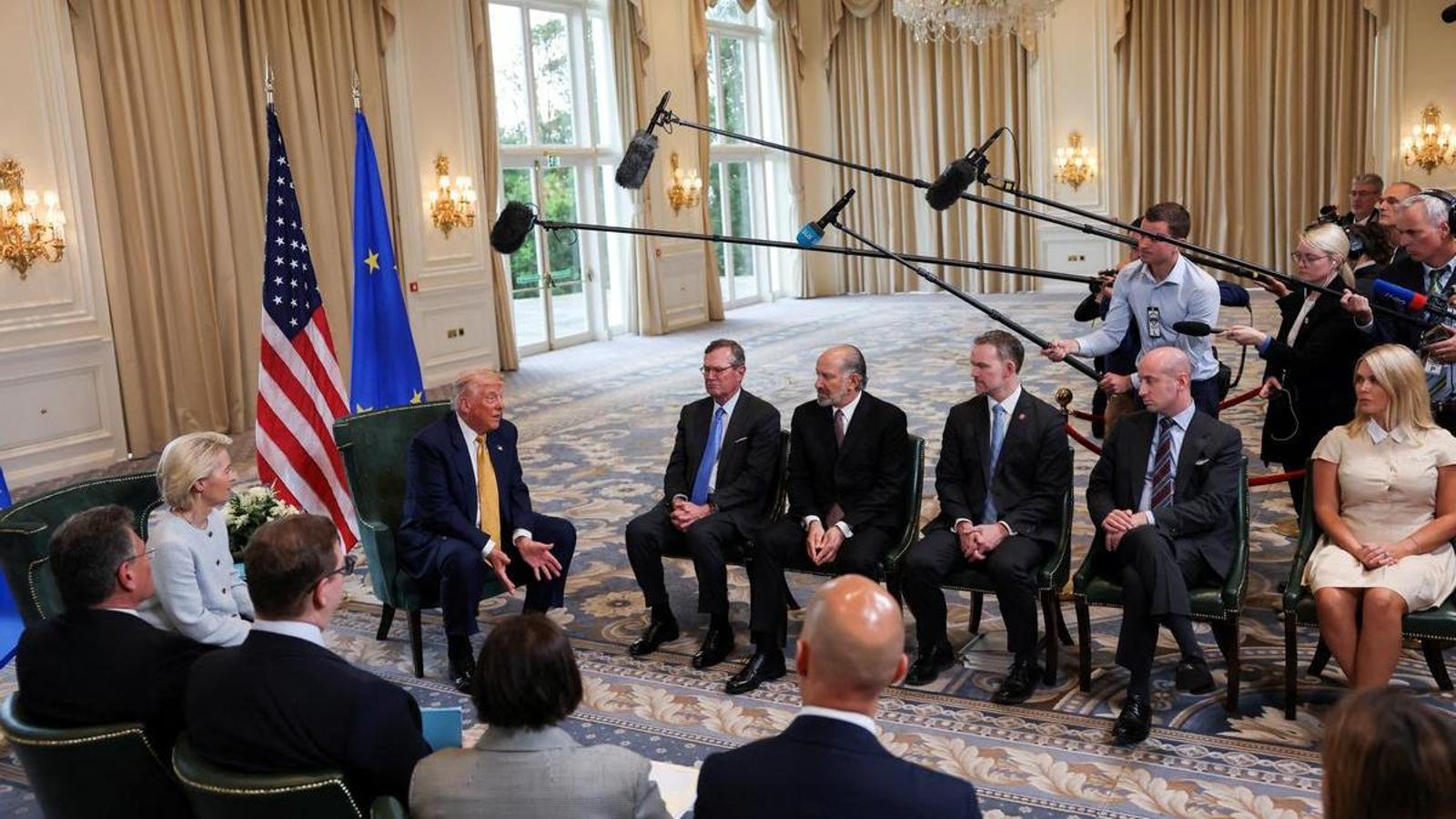The global economy enters the era of Trump's tariffs without knowing the fine print.
No details of the agreements reached between the US and the various countries have been published.


WashingtonA leap of faith that the market has signaled before launching into it with no other alternative. The global economy is groping its way through the new era of Donald Trump's tariffs, in which all that is known, for now, are verbal commitments and not written ones. Beyond the executive order that the White House issued last week to implement the import taxes that are due to be applied in the coming hours, none of the agreements reached with the countries with which it negotiated have been published. The absence of black-on-white details only increases the questions about how the commitments should be implemented (or whether they are feasible), and, amid the uncertainty, Trump is gaining strength.
This Tuesday's threat to impose a 35% tariff in the European Union If he doesn't fulfill his promise to invest $600 billion in the US economy, it's a clear sign of the elephant in the room. Trump seems to have returned from Scotland with the idea that the money promised to him by European Commission President Ursula von der Leyen would flow unhindered to the United States. The rumor about Brussels' inability to dictate where companies and private shareholders should spend the money seems to have finally reached the US president. Hence the bite of the possible 35%. Trump's comment that he considers the agreement a blank check—"I can do whatever I want with that money"—already hints at how deeply the president views the issue.
Another example of how the pact between Brussels and Washington remains a reference framework is the fact that the Europeans are still negotiating against the clock over which products will be exempt from the general 15%. The EU is pushing to get European wines, spirits, and beers exempt from the tax, keeping the industry on tenterhooks until the last minute.
In Japan, the lack of concreteness of a printed pact is making the story Trump and the Japanese tell their people quite divergent, even though they are talking about the same agreement. The American has been claiming that Japan has agreed to a new $550 billion financing mechanism that will "rebuild and expand key U.S. industries" and that he himself will decide where to put it. Trump again spoke of the figure as if the Japanese had to make a transfer to him. In Tokyo, the story is different: Japanese trade negotiator Ryosei Akazawa has already emphasized that they will only contribute "between 1% and 2%" of that amount in cash, and that the rest will come from loans or financial guarantees from banks linked to Japan.
The new threat to the EU of raising tariffs also confirms that sitting down to negotiate with Trump does not guarantee any protection against future twists. Just as he has continued to squeeze the Europeans, who have done their part to appease him, he has also threatened India, which refuses to yield to his pressure. This Tuesday, the tycoon told Narendra Modi that the 25% tariff on its imports will be "higher" if he persists in buying crude oil from Russia.
China and Mexico, on the alert
Beyond the countries that have agreed to new tariffs and those that haven't, there's also the group of countries still playing with extra time: China and Mexico. Having gained more time to continue negotiating keeps the uncertainty about how the talks will conclude or whether tariff extensions will have to continue month after month. With Beijing, the date for a final agreement is supposedly "imminent," and in the meantime, 30% tariffs will be applied. Mexico is also breathing a sigh of relief as tariffs continue to apply only to products outside the USMCA. Indeed, the American consumer is the first to notice the price increase in supermarkets for fresh produce imported from that country. The US's other neighbor, Canada, is resignedly facing the unilateral 35% tariff.
Beyond the economic impact, US ports and customs are also logistically preparing for an increase in workload. The 60,000 employees of Customs and Border Protection will not only have to enforce the president's immigration policy, but they will also be tasked with asset control. The Big Beautiful Bill passed by Congress provides for increased funding to expand staff and provide more resources to the office. But this could take months to implement. The tariffs will go into effect tomorrow.
The magazine Wired reported that since the first tariffs were passed in April, complaints of dubious practices by importers trying to avoid the tariffs have already skyrocketed by nearly 160%. And they will likely continue to grow. One of the most common practices is mislabeling the package's contents or the country of origin, in an attempt to circumvent the tax.
Ironically, the tariffs will also impact the machinery used at seaports to unload containers. Cary Davis, president and CEO of the American Association of Port Authorities, explained to NPR that the United States still relies on China for the giant cranes that unload ships. "China has about an 80% market share for these giant cranes that go from the ship to the ground. [...] Last week, a bill was introduced, the so-called Puerto Crane Tax Credit Act"To help incentivize the manufacturing of these large cranes in the United States. But it takes time. It takes a period of preparation and ramp-up. So, in the meantime, we must continue to source these cranes from China, Austria, Ireland, or Korea until we can manufacture them here in the United States," Davis explained Monday.
